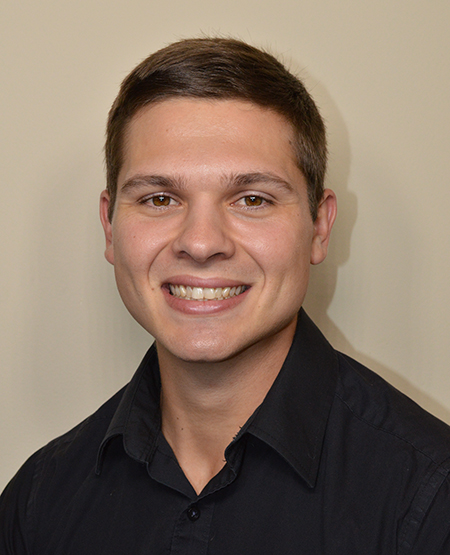 John Ricca
John RiccaJohn began his undergraduate studies at the University of Central Florida, and is currently pursuing a Ph.D. in Chemistry at FAU. In 2017, he began research on the nutrient dynamics and microbial taxonomy of the Kissimmee River - Lake Okeechobee watershed. He has recently collaborated with members of FAU and the South Florida Water Management District to study the storage and speciation of phosphorus and other key elements in stormwater treatment areas. His current research aims to apply physical chemistry techniques to understand various biological mechanisms of harmful algal bloom forming cyanobacteria, specifically the interaction between cyanobacterial cells and various toxins they produce.
John was chosen as the 2021 CES-USGS Research Support Program (RSP) awardee, which supports FAU graduate students interested in, or currently conducting, Everglades restoration-related research. John will be working part-time for the Center for Environmental Studies as he pursues his research, along with working collaboratively with a USGS scientist, as a part of the RSP program. This program aims to build a strong linkage between the science being conducted at FAU and the USGS users of that science.
I first went to FAU to finish my bachelor’s degree that I started at the University of Central Florida. I began working with the CES when I met Loisa Kerwin and learned about the field lab on the Kissimmee River. I spent a lot of time on the river for fun, so once I heard about the research opportunities I immediately got involved.
I obtained a B.S., M.S., and Ph.D., all in chemistry, from FAU.
I decided to study physical sciences in high school. My sophomore year chemistry teacher sparked my interest in chemistry and physics, and once I reached college, I chose to study chemistry. My interests are very broad, and as a chemist I have had opportunities to work in a variety of fields from environmental sciences to quantum physics.
I worked as a research assistant with the CES for three years, studying harmful algal blooms, particularly, the blue-green algae which occur yearly in Lake Okeechobee, Florida.
My thesis was centered around cyanobacteria (a.k.a. blue-green algae). There were two main projects, one involved the discovery of a new class of protein filaments unique to cyanobacterial (CT pili), and the other on the use of stable isotopes for vibrational spectroscopic studies of cyanobacterial toxins.
My favorite memory with the CES was the first time I got to explore the Kissimmee River floodplain by airboat. I departed from Riverwoods with a South Florida Water Management District field scientist, and we spent the day carving through a foot of water to collect samples throughout a recently restored portion of the floodplain. Towards the end of the day, the airboat engine threw a rod through the oil pan, and we had to get picked up by another boat. That day, and the ending of that day, I will never forget.
As I have just finished my Ph.D., I recently began a Postdoctoral fellowship. I transitioned to a more physics-based field of chemistry for my postdoc, and I work at the Institute of Supramolecular Science and Engineering (at the University of Strasbourg). Here I am studying Vibrational Strong Coupling (VSC) in hopes to better understand how it works and its potential applications.
Take advantage of opportunities that are presented to you. If someone offers training on a particular technique, learn it, even if you think you most likely won’t need it. Don’t be afraid to reach out to people for help with something, whether it be scientific collaboration, training on some equipment, or even just professional advice. Most are happy to give it, and don’t be discouraged by the few that aren’t.
Mainly, I enjoy spending time with family and friends. I also enjoy just about any activity in the outdoors of Florida, whether it be boating hunting, fishing, or just camping.